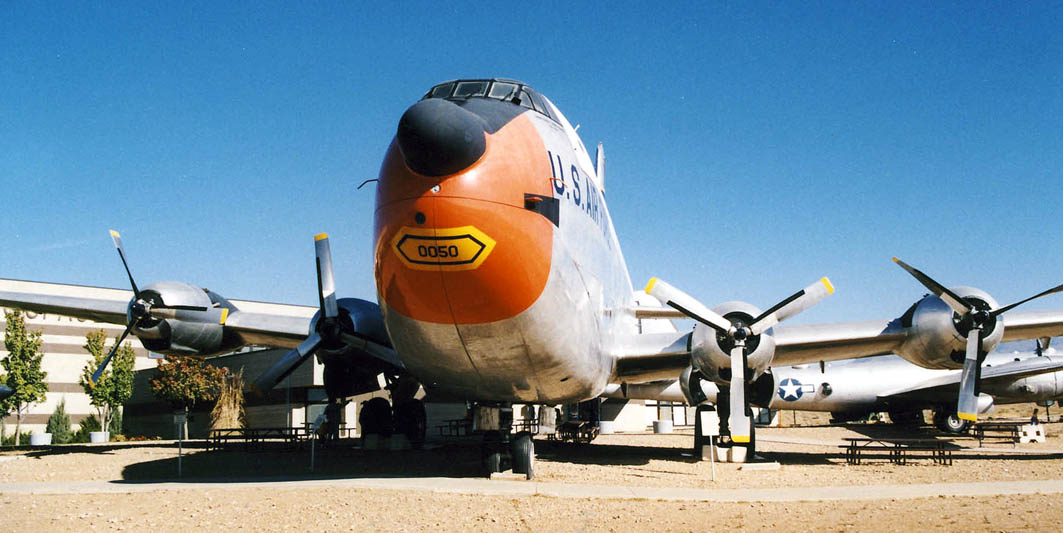
Douglas C-124 Globemaster II
 |
| Globemaster II 53-0050 was saved from scrapping after being used as a military storeroom, was fullt restored and is now a star exhibit at the Hill Aerospace Museum, north of Salt Lake City in Utah, US |
| The original Douglas C-74 Globemaster was ordered when the US was
still fighting Japan in World War II and envisaged the need for a new long
range airlifter. This Globemaster I did not fly until September 5, 1945, by
which time the war was over and only 14 were built. This type had four 3,000hp
Pratt and Whitney R-4360-27 radial engines and could carry 125 troops. It was
originally built with two 'bug eye' canopies over the crew positions before a
more airliner-like layout was adopted. The newly-formed United States Air Force recognised the type's promise when, in late 1947, it decided it needed a heavy cargo transport. Douglas then redesigned the type as the C-124 Globemaster II. The prototype YC-124 was the fifth C-74 with a new deeper fuselage and powered by four 3,500hp R-4360-49 radials. It flew for the first time on November 27, 1949. The type entered service as the C-124A and 204 were built. The only other production version was the C-124C, with more powerful engines, weather radar in a distinctive nose radome and wingtip fairing housing combustion heaters to de-ice the wing and tailplane leading edges. The last of 243 C-124Cs entered service in May 1955. The type featured clamshell nose doors and two internal cranes which could slide along inside the roof of the cabin to help loading. It could carry 200 troops or 123 stretchers. The type saw widespread service as an airlifter during the Vietnam War until replaced by the Lockheed C-5A Galaxy in 1970. Both the C-74 and C-124 had only limited success as a civilian aircraft. One US-registered C-124 became well known when it was positioned among the casinos and hotels of Las Vegas, but this was scrapped in 2001. |
| Contents | Photos and census | Update |